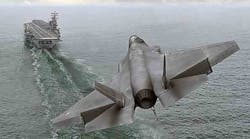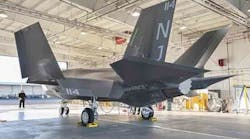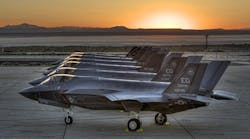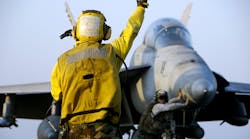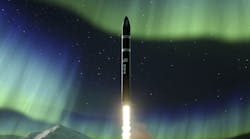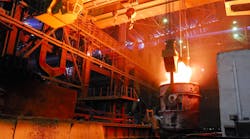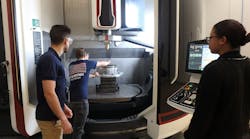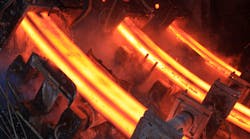Two federal oversight teams are calling attention to quality-control violations in Pratt & Whitney’s production and program management for the F135 engine, the afterburning turbofan unit that powers the F-35 Lightning II Joint Strike Fighter -- one of the costliest and highest-profile U.S. defense programs. The Government Accountability Office, a Congressional agency, studied flight test data and concluded that the reliability of the F135 engines is “very poor (less than half of what it should be) and has limited” progress for the F-35 program.
The GAO said design changes would be needed for the F135 engines, including retrofitted versions for jets already built. The same report found ongoing flight software errors.
Separately, a U.S. Department of Defense Inspector General report listed 61 violations of quality management rules and policies discovered by its inspection of the F-35 fighter jet engine, and warned these problems could drive further cost increases and schedule delays in the F-35 program. Most of the problems were categorized as “major” by the IG, which blamed Pratt & Whitney, rather than Pentagon overseers for the problems.
DoD’s IG reported that the number of problems identified would mean more quality problems should be anticipated, affecting engine performance, production schedule, and program costs.
The F-35 Lightning II jet fighter is a stealth-enabled, single-engine aircraft due to be introduced this year by the U.S. Marine Corps. It has been in development and evaluation for several years, with production proceeding based on successive budget allocations. The USMC, U.S. Air Force, U.S. Navy, and the U.K. Royal Air Force, will use different versions of the F-35 for ground attack, reconnaissance, and air-defense missions.
Nearly 2,500 of the jets are anticipated in the full run of the program. Lockheed Martin is the primary contractor for the F-35, which is considered the most expensive fighter jet system ever built, with a cost reported at up to $98 million per jet last summer.
Last year, Lockheed Martin and two of its primary partners, Northrop Grumman and BAE Systems agreed to meet lower-cost targets for the F-35 set by the U.S. Department of Defense. DoD called the initiative “The Blueprint for Affordability.” Earlier this year, a Lockheed representative reported their cost-saving initiative has begun to show results, and further savings may be expected when the next series of jets are authorized for production.
Cost overruns and production delays have lingered over the F-35 program for several years. In particular, a design problem that was not related to manufacturing issues emerged last year, idling the jets while Pratt & Whitney and the Pentagon evaluated the matter. There also have been quality-control issues in the engine components supply, according to the GAO.
Pratt & Whitney issued statements in reply to each report. The manufacturer stated it “disagrees with the conclusions drawn relative to engine reliability by the GAO. Our current F135 CTOL engine achieves and exceeds specification requirements (147% of required levels). The reliability of the F135 STOVL engine meets 119% of its current requirement.”
It continued: “The report incorrectly assessed engine reliability, as it did not account for new designs that have been validated and are being incorporated into production and fleet engines. While the report lists some propulsion reliability concerns, the F-35 Joint Program Office and Services have validated our reliability performance and we will continue to enhance reliability for the fleet as it matures to minimize life cycle cost and support continued high rates of engine availability.”
Separately, Pratt stated the DoD’s Inspector General’s report “is based on their audit in November of 2014. Since then, P&W has worked aggressively to address the DoD IG's findings and corrective actions. This was an audit of P&W's quality system and F135 contractual adherence, not an audit of F135 product quality.
“None of these findings had any impact on the product performance,” the manufacture emphasized. “None of the findings has, or would have, affected the operational fleet, safety or mission capability of the aircraft or the F135 engine. As of mid-April, P&W has already implemented approximately 60% of our identified corrective actions, and all but one are scheduled to be completed by July.”
The engine builder also reasserted confidence in its “world-class quality management system that produces the safest and most reliable engines in industry,” but also committed itself to continuous improvement.

